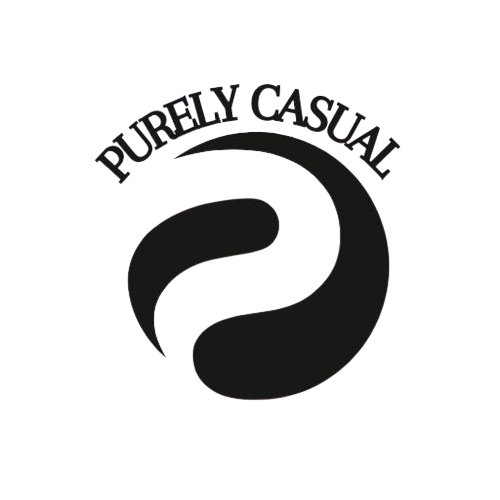Bstoer.Top is a scam website pretending to be a legitimate online store. It falsely presents itself as an official Barnes & Noble website, tricking unsuspecting customers into making purchases. Once you pay, the site takes your money but never ships the products.
This type of scam is becoming more common as online shopping grows. Many shoppers are drawn in by offers that seem too good to be true, in the case of Bstoer. Top, the deals are designed to lure victims who believe they’re getting great discounts on books and other products.
Once a customer places an order, they often receive no confirmation or shipping details. Reaching out to customer service results in blocked contact or no response. Victims are left without their products and, most importantly, without their money.
The scammers behind this fraudulent site use clever tricks to make it look authentic. They mimic the branding of Barnes & Noble, using similar logos and layouts. This creates the illusion that customers are shopping on a trusted platform.
There are many red flags to watch for when shopping online. For example, websites like this often have vague contact information and poorly written content. These clues can help you spot fraudulent sites before you fall victim.
By staying informed and cautious, you can avoid scams like this one. In the rest of this post, we’ll explore how this scam works, the signs of fake websites, and what to do if you’ve been scammed.
Table Of Contents
How the Scam Works
Deceptive Advertising Tactics
This fraudulent website uses false advertising to lure customers into their trap. It offers unbelievably low prices on popular items like books and electronics. These deals trick people into thinking they get a bargain from a trusted source.
The site mimics the look and feel of an authentic store. It uses similar logos, colours, and design elements to convince buyers they are on a legitimate site. This creates a sense of trust, especially for shoppers hurrying to get a good deal.
These tactics draw in many victims, unaware they are not shopping on an official Barnes & Noble website. The site relies on impulse buyers who might not take the time to verify its legitimacy.
The Checkout Process: No Products, No Refunds
Once a customer makes a purchase, the trouble begins. The website processes payments immediately but fails to send any order confirmation or shipping details. Most customers are left waiting for their orders, which never arrive.
Attempts to reach customer support are usually ignored. Sometimes, the website blocks customers from contacting them after a complaint. This makes it nearly impossible for victims to get a refund or resolve the issue.
Sadly, many people realize too late that they’ve been deceived. When they understand what happened, their money is gone, and there’s little chance of recovering it.
Customer Complaints Against the Fraudulent Site
Many victims have reported their experiences on scam-reporting websites. Common complaints include lost payments, fake order confirmations, and zero customer service support. These complaints highlight the effectiveness of this scam in deceiving online shoppers.
Victims often mention how real the website appeared when they first purchased it. They realized they had fallen for a scam only after they didn’t receive their products. Unfortunately, the site blocks all communication once money is taken.
It’s important to report scams like this to protect other potential victims. Sharing complaints can help expose fraudulent websites and prevent further financial losses.
Red Flags to Watch for on Scam Websites
Unbelievably Low Prices
One of the biggest signs of a scam website is prices that seem too good to be true. This site offers products at huge discounts, often far below what reputable stores charge. These extreme deals are designed to grab attention and make shoppers think they are getting an incredible bargain.
Legitimate retailers rarely offer deep discounts, especially on new or popular items. If you come across a deal that feels suspicious, it’s a major red flag. Always compare prices with trusted online stores to see if the offer is realistic.
Vague or Missing Contact Information
Another warning sign is the lack of clear and reliable contact information. Fraudulent websites often provide vague or incomplete contact details. For example, the site may list only an email address or a phone number that doesn’t work.
Legitimate businesses typically offer multiple ways to contact them, including a physical address, phone support, and email. If you can’t easily reach customer service, staying away from the website is a good idea. Scammers use this tactic to avoid responsibility once they have your money.
Poor Website Design and Content
This site may look professional, but closer inspection reveals many design and content flaws. Scam websites often have poorly written descriptions, grammar mistakes and awkward wording. They copy content from other sites or quickly throw it together to trick visitors.
In addition, fake stores usually have inconsistent designs. Some pages might look well-made, while others seem sloppy or incomplete. These inconsistencies show that the site is not professionally managed, typical of scam operations.
Suspicious Domain Name
The domain name is another indicator of fraud. Most reputable companies use domain names that reflect their brand. In contrast, this site uses a random name that has no clear connection to the products it supposedly sells.
Scam websites often use strange or generic domain names to avoid detection. If the domain doesn’t match the company, something is wrong. Always double-check the URL before purchasing to ensure you’re on a legitimate website.
Fake Reviews and Testimonials
Fraudulent websites often feature fake reviews and testimonials to appear trustworthy. These reviews are usually overly positive, vague, and generic. They may describe products or services in a way that feels too perfect, without any details or specifics.
Legitimate reviews often mention both the pros and cons of a product. If all the reviews seem too good to be true, they’re likely fake. Scam websites use these false reviews to build trust and convince buyers to purchase without investigating further.
What to Do If You’ve Fallen Victim to the Scam
Contact Your Bank or Credit Card Company
Contact your bank or credit card company immediately if you’ve made a purchase on this site. Explain that you were a victim of a scam and request a chargeback. Most credit card companies offer protection against fraudulent transactions, so you may be able to recover your money.
Time is crucial when dealing with scams. The sooner you contact your financial institution, the better your chances of getting your money back. Be sure to provide proof of the transaction, such as emails or screenshots.
Report the Scam to Authorities
It’s important to report scams like this to the proper authorities. You can file a report with your country’s consumer protection agency, such as the Federal Trade Commission (FTC) in the U.S. This helps law enforcement track and shut down fraudulent websites.
You can also report the scam to online fraud platforms like the Better Business Bureau (BBB) or consumer review sites. Sharing your experience will warn others about the scam and help prevent more people from becoming victims.
Secure Your Online Accounts
If you provide sensitive information like your email or password on the scam website, change your passwords immediately. Scammers might try to access your other accounts if they have your login information. Use strong, unique passwords for each of your accounts to stay secure.
Consider enabling two-factor authentication (2FA) on important accounts, such as your email or bank. This adds an extra layer of security, making it harder for scammers to gain access even if they have your password. Also, monitor your accounts for any unusual activity.
Keep an Eye on Your Credit
After falling victim to a scam, monitoring your credit report is a good idea. Scammers may attempt to use your personal information for identity theft. You can request a free credit report from major credit bureaus to check for any suspicious activity.
If you notice anything unusual, consider placing a fraud alert or credit freeze on your account. This will help protect your credit and prevent scammers from opening new accounts in your name. Regular credit monitoring is an important step in protecting yourself after a scam.
How to Protect Yourself from Future Online Shopping Scams
Verify Website Legitimacy Before Buying
Before making any purchase, it’sverifying the website is legitimate is important. Check for key signs of trust, such as a secure URL (it should start with “https”), a privacy policy, and clear contact information. You can also search for website reviews on trusted platforms to see if other customers had good experiences.
If you come across an unfamiliar website, take time to research it. A quick search for the site’s name and the word “scam” can reveal if others have reported issues. Spending a few extra minutes checking is better than the risk of losing money.
Use Trusted Payment Methods
Always use secure payment methods such as credit cards or services like PayPal when shopping online. These offer buyer protection in case something goes wrong. You can dispute the charge and possibly get your money back if you’re scammed.
Avoid wire transfers, gift cards, or direct bank transfers for online purchases. These payment methods are harder to trace and offer little protection if the transaction is fraudulent. Scammers often request these types of payments because they know it’s difficult to reverse them.
Recognize Deals That Are Too Good to Be True
If a deal seems too good to be true, it probably is. Scammers use huge discounts to attract victims. Always compare the prices of products with those of other reputable online stores before deciding.
Be cautious of websites that offer massive discounts on popular or high-demand items. Legitimate retailers rarely sell new items at extremely low prices, especially without clear reasons like a sale or clearance event. Trust your instincts if something doesn’t seem right.
Research Unknown Websites and Sellers
Suppose you’re unfamiliar with a website or seller; research quickly before purchasing. Look for reviews on trusted websites and forums to see if others have had positive or negative experiences. Sites like Trustpilot and the Better Business Bureau are useful for checking the reputation of online stores.
Online tools allow you to search for the website’s domain registration details. Scam websites often have newly registered domains with short lifespans. If the site was only recently created, that’s a potential red flag for fraudulent activity.
Stay Updated on Scam Alerts
One of the best ways to protect yourself from future scams is to stay informed. Sign up for scam alert newsletters or follow websites that track online fraud. Forums like MalwareTips and consumer protection agencies often post about the latest scams.
Being aware of current scams will help you recognize warning signs faster. By keeping yourself informed, you can avoid falling victim to the same tricks that have caught others. Staying proactive is key to safe online shopping.
Conclusion
The Bstoer. The top scam is a reminder of the dangers that exist in the world of online shopping. By pretending to be a legitimate website, it deceives customers into making purchases they’ll never receive. Recognizing the red flags of scam websites—like too-good-to-be-true deals, vague contact details, and suspicious domain names—is crucial for protecting yourself.
If you’ve fallen victim to a scam, immediately contact your bank and report the fraud to authorities. Securing your accounts and staying informed about the latest scams are essential to protecting your financial and personal information. Always research unfamiliar websites and use trusted payment methods to minimize risks.
By being cautious and aware, you can enjoy the convenience of online shopping without falling for scams like Bstoer. Top.
FAQs
What is Bstoer? Top?
Bstoer. Top is a fraudulent website that is falsely presented as an official Barnes & Noble store. It lures customers with incredibly low prices but never ships the products after payment.
How can I identify a scam website like Bstoer? Top?
Look for red flags such as unrealistic prices, poor website design, vague contact information, and suspicious domain names. Additionally, read reviews and check for complaints from other customers.
What should I do if I purchase Bstoer? Top?
Contact your bank or credit card company immediately to report the transaction and request a chargeback. Also, report the scam to consumer protection agencies to help prevent others from being scammed.
How can I protect myself from future online scams?
Always verify the legitimacy of websites before making a purchase. Use trusted payment methods, research unknown sellers, and stay updated on current scams to minimize risks.
Are there any ways to recover money lost to a scam?
If you paid with a credit card, you may be able to dispute the charge and recover your money. Contact your bank or credit card issuer as soon as possible for assistance.
Can I report a scam website like Bstoer? Top?
You can report scam websites to authorities such as the Federal Trade Commission (FTC) and consumer protection agencies. Sharing your experience can help warn others and potentially lead to the shutdown of the fraudulent site.
How do I know if an online deal is legitimate?
Compare prices across multiple reputable sites and look for product and seller reviews. If a deal seems too good to be true, it’s wise to be cautious and avoid purchasing.







